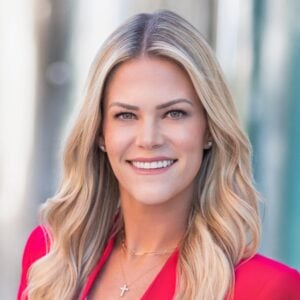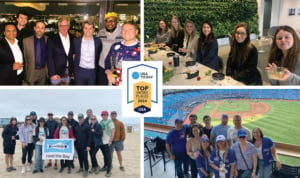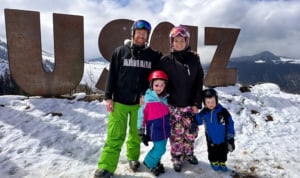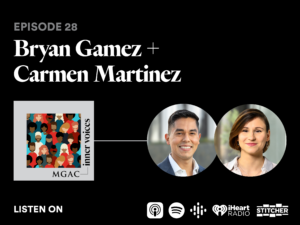MGAC Impacts: Jerry Walters on Delivering for Clients, Sage Dorm Room Advice, and Hospitality’s Next Move
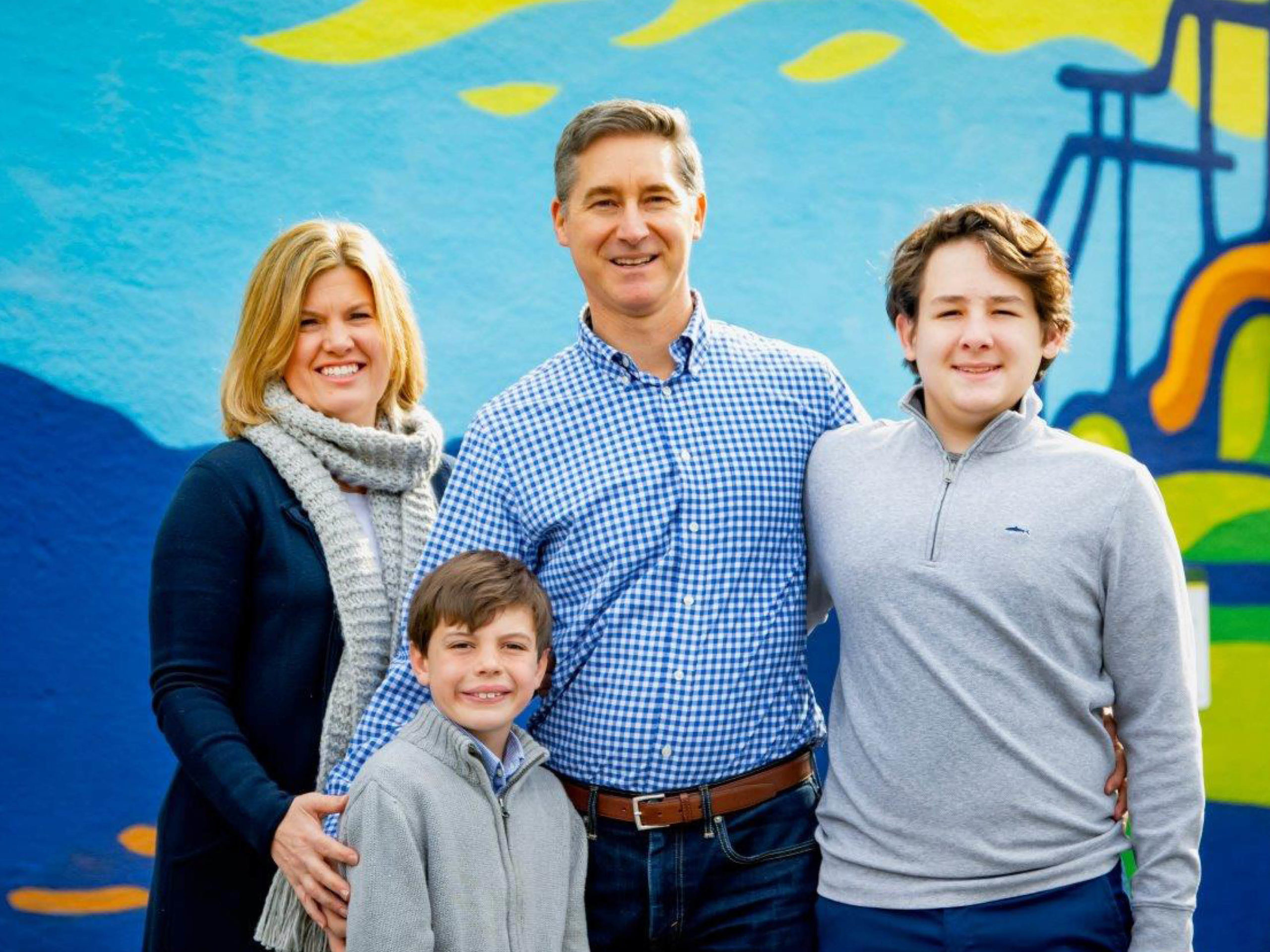
The Impact Blog is a spotlight series that highlights and celebrates the diverse employees that make MGAC tick. Beyond their day-to-day schedules, we want to know how they have a greater impact on their colleagues, their company, and the communities in which they live and work. We want to know what makes them get out of bed in the morning, what led them to their current role, and what they hope their lasting impact will be.
Today, we get to know Jerry Walters, Vice President at MGAC.
—
MGAC: Hi Jerry, welcome to the blog! Tell us what you do at MGAC.
Jerry Walters (JW): I’m a Vice President within the Hospitality Team. I’m based in our Washington, DC office, but I get to manage hotel renovations and new builds for clients across the country.
MGAC: And how long have you been with the company?
JW: It will be 11 years this September!
MGAC: Nice! What were you doing before you came here?
JW: Before MGAC, I worked for a real estate developer and a general contractor. Immediately prior to coming on board, I was in a consulting role for the U.S. Army Corps of Engineers. I thought it would be more construction- and project-related. But it was my first foray into government work, and as it turned out, was much more focused on analysis and planning. As someone who enjoys being more hands-on and moving projects forward, I quickly figured out it wasn’t for me.
MGAC: Let’s go back a little farther. What did you want to be when you grew up?
JW: When I was a kid, I thought being an architect would be cool. But, as I got older and got more interested in math and science, I felt less inclined toward that artistic side of the built environment. Ultimately, I studied civil engineering in college—so I was always operating in this arena.
MGAC: What would that kid think about your current job today?
JW: I think kid-me would think it’s pretty cool getting to see projects come together. What’s always attracted me to the industry is that you’re actually building something. You’re putting that real, concrete something in place.
MGAC: What keeps you busy these days?
JW: I just wrapped up the renovation of the Hamilton Hotel in Washington, DC. It’s in a great location right in the heart of town on K Street. Incorporated in the work is the Schuyler event venue. For years, the hotel had used a neighboring property’s large ballroom as its de facto large ballroom space. The new owner of the hotel was able to forge an agreement for exclusive use of the ballroom, now dubbed the Schuyler. As part of the renovation, we were able to create a new interior connection between it and the hotel. It took some coordination to figure out how to build that entrance between the two buildings—and more broadly, to renovate a space that hadn’t been renovated since probably the 1980s. It was a significant transformation.
MGAC: How interesting! With that project wrapped, what’s ahead?
JW: I’m also currently working on the planning for a major renovation to a hotel, beach club, and country club in Delray Beach, Florida. It’s an unbranded property—which means there’s a lot more flexibility in what we can do. The owner is really excited about the transformation. We’re planning to build a model room out in May, and that will kick off the guestroom renovation, which will happen after their busy season in 2022.
MGAC: You mentioned the impacts on hospitality work during the pandemic. What comes next?
JW: That’s the million-dollar question! Everyone is trying to figure out what happens next and where things are going.
MGAC: What are your takeaways?
JW: The last year obviously brought huge disruptions to hospitality. Hotels didn’t have much business; many closed or scaled back their offerings. I think things are starting to open up more now. We’re seeing that drive-to resort destinations are extremely busy. I think the bigger challenge is the downtown properties and big convention properties with a decline in business travel. I think owners who are going to be successful with those properties are rethinking how their properties can be used. For example, creating new leisure activities to draw guests in. And really getting people comfortable with the ways they’re adapting, such as showcasing their safe cleaning procedures and opportunities for guests to safely distance. This industry has always been one where the details matter—and that is going to be especially true in the months ahead.
MGAC: Safe to say this is one of the biggest work challenges you’ve faced in your time at MGAC.
JW: Absolutely. I joined in 2010. By then, the 2008 / 2009 recession was ending, and things had been relatively healthy from then until now. This has certainly been one of the biggest challenges I’ve encountered in my career.
MGAC: How has it affected the way you approach your work?
JW: The biggest is just the need to be flexible and nimble. Both in terms of taking on more work and potentially different roles than you have in the past, and in being willing to approach a project from a different perspective than you would in a “normal” circumstance. It’s about expecting the unexpected—because the impacts keep coming, sometimes from places you wouldn’t anticipate. As for relationships with clients, it’s made me even more intentional about opening those lines of communication and making sure that, if anything, we’re over-communicating. Because things are changing quickly, we want to ensure all the information is shared and folks aren’t caught off guard. Ultimately, these aren’t fundamental changes to the way our team operates—we’ve always been both adaptable and highly communicative—but we want to make sure we’re totally on point and ready to react to whatever is thrown at us.
MGAC: Absolutely—it’s critical to be ahead of that curve! What impact do you hope to have here at MGAC?
JW: It boils down to delivering really good projects for our clients at the end of the day. Ensuring we’re providing the best service we can and delivering above and beyond what the client would ever expect. One of the most rewarding parts of my job is seeing people come together to pull off a project and I try to lead by example in forging that team-based attitude.
MGAC: And when it comes to client relationships?
JW: I try to serve as a mediator. A lot of these projects get complicated. I think it’s our job as project manager to make the work as simple for the client to understand as possible. There may be all these complex things happening in the background, but we can boil it down to a simple, straightforward evaluation of the issue so the owner can understand it and make the decisions that need to be made to move the project forward without getting too bogged down in the weeds.
MGAC: How do you hope your work will impact your community at large?
JW: I enjoy handing the ‘keys’ over to the final product and seeing the look on a client’s face. I think that’s what continues to draw me to the industry: being able to change a place in such a way that will have a positive impact on a community. I’ve worked on projects where you transform a run-down building or a vacant lot—and it’s equally transformative to that place. It’s exciting to have that experience, both professionally and personally.
MGAC: Speaking of community impact, you’re quite involved with the Urban Land Institute (ULI). What’s that organization all about?
JW: It’s a professional organization focused on the built environment. It’s headquartered in Washington, DC, but has chapters across the country and even some international branches. It provides members (who are planning and design professionals, project managers, land-use attorneys, really anyone who touches the built environment) with opportunities for education, networking, and other resources.
MGAC: What are some specific ways you’ve gotten involved?
JW: I’ve been in a program for mid-career professionals called NEXT for five to six years now. We meet in small groups every other month to discuss a topic related to the field. Sometimes, we’ll bring a speaker in or go on a building tour. For instance, this year, my group has been talking about new energy conservation laws coming online in New York City and Washington, DC and how they may impact both new construction and existing buildings. I’ve also participated in ULI’s leadership program, a yearlong program that involves meeting once a month for a full day with the intent of helping you develop your leadership skills.
MGAC: What an incredible resource! Looking back on your decade-plus with the company, what at MGAC has made an impact on you?
JW: The value of relationships. A lot of our work is repeat business—particularly in the hospitality environment. It’s a lot of the same contractors, owners, and designers you’re working with over and over again. So, it’s key to not only establish relationships, but to maintain them over time.
MGAC: What gives you energy each day?
JW: Having people I can depend on. When you have a team that will support you—whether at work or at home—anything is possible.
MGAC: What is your secret to winding down at the end of a long day?
JW: I wish I had a magic answer to that! I’d say spending time with my family, having dinner together and generally, relaxing at home. That’s really what works for me. I also try to find time to get outside. That’s helped a lot in the past year, in particular.
MGAC: What about your secret to starting the morning off on the right foot?
JW: Coffee. It’s the first thing I do. And nothing special, just a Keurig machine!
MGAC: Name a book that has made a significant impact on your life.
JW: I read a book a couple of years ago called A Walk in the Woods. The writer, Bill Bryson, had the notion he was going to walk the Appalachian Trail all the way through. I’d always had the same thought: “Maybe when I’m older, I’ll hike the entire Appalachian Trail.” (I can tell you, after reading the book, I don’t think I’ll ever be a through-hiker. It’s not for me!) But what I took from the book is that he’s this middle-aged guy who really didn’t have any place being on the Appalachian Trail. He hadn’t trained for it enough or done the level of research he should have. But still, he persevered. Ultimately, it’s about the fact that you can always do more than you think you can do. And it’s all told in a fun way—it’s a great read.
MGAC: How about a favorite quote that inspires you?
JW: One of my roommates in college was also an engineering student. It’s a difficult course of study, with a lot of work. We would often say, “With each day, there’s new hope”—kind of as a joke. But as a project manager, I’ve realized that’s an important perspective to have. You’ll be in the midst of a project when you encounter an issue, or things don’t go the way you planned. I think the takeaway is you have a chance each day to make it right. You need to have that confidence that you’ll work through it. It took me a long time to really understand that.
MGAC: Such a good point! Now, how about a few rapid-fire questions?
JW: Okay!
MGAC: Describe your job in 5 words or less.
JW: Delivering for clients, always.
MGAC: What’s the first thing you do at work every day?
JW: Check my to-do list. I usually make one list that I update throughout the week.
MGAC: What’s the last thing?
JW: Review my schedule for the next day.
MGAC: What’s the weirdest thing we might find in your desk or work bag?
JW: An extension cord, for when I’m traveling. They come in handy in the airport. Of course, I haven’t been traveling as much lately, but traditionally hospitality projects have me traveling a lot. So, I’m always prepared.
MGAC: What’s the most used app on your phone?
JW: Probably the Message app, or Hangouts from Google. I have two kids—ages 9 and 14—so that’s how my wife and I are keeping track of them.
MGAC: What does the rest of 2021 look like for you?
JW: Like everyone, just trying to prepare for what comes next. Figuring out how things are going to shake out as we near the end of COVID-19—or learn to live with COVID-19, whatever it may be. That’s both in the workplace and in terms of what our next projects are going to look like. I’m confident our team can tackle the projects. But knowing what they are going to be and, more generally, how the hospitality industry is going to react to where we are—those are still big questions.
MGAC: Where do you see yourself in 5 years?
JW: I’d like to take on more leadership roles and really be able to help shape the future of MGAC. I think that would be really exciting. I’ve been here 10 years and the company has grown tremendously, both in the number of people we have on staff full-time and office locations. When I joined, we did have our office in Seattle, but that was it. Now we have offices in Los Angeles, Toronto, and elsewhere. The growth has truly been dramatic.
MGAC: What’s something your colleagues don’t know about you?
JW: I’m a pretty good cook! And I like to make cocktails. Manhattan’s, in particular, are my favorite. I’m subscribed to Shaker & Spoon, a monthly subscription service that sends you the ingredients to make three cocktails. One of my brothers and a friend also get the subscription and each month, we get together—either in person or on Zoom—to make the drinks and spend time together.
